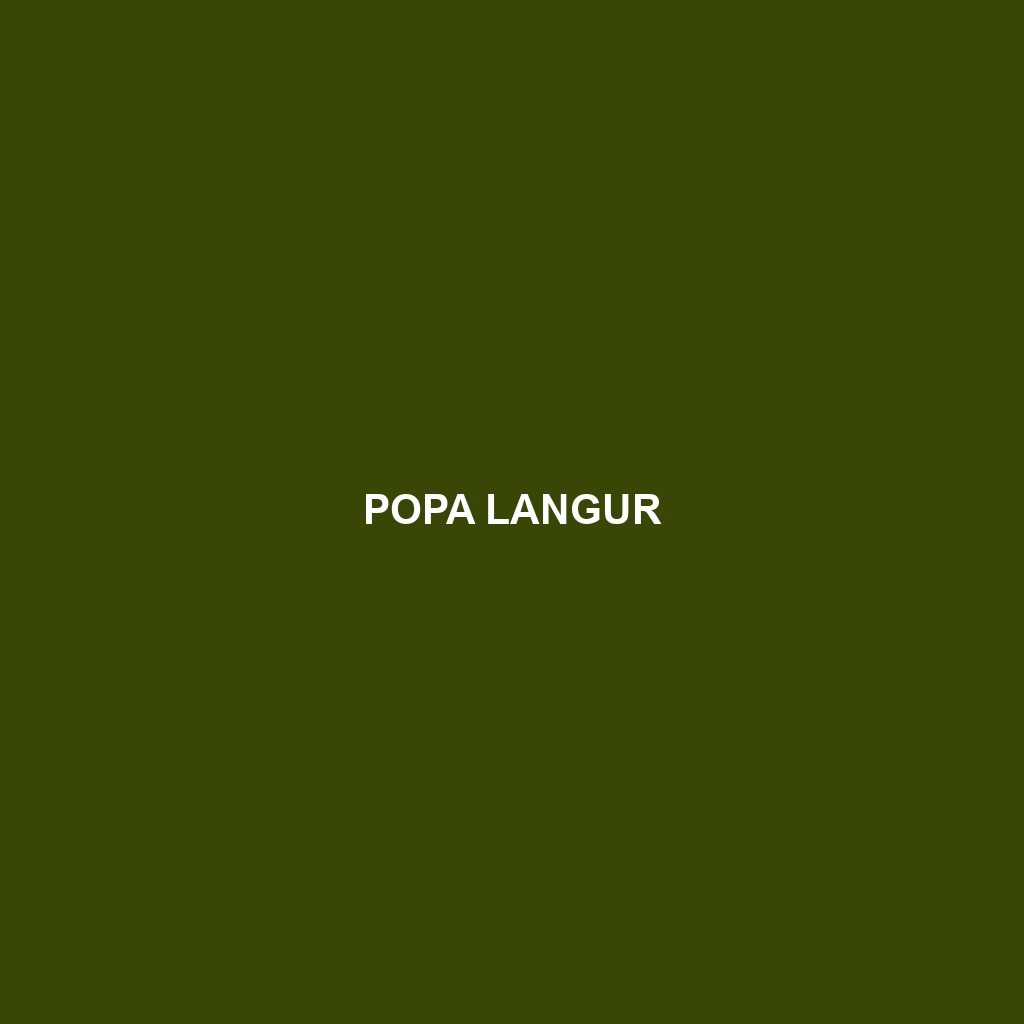Selangor Silvery Langur: A Comprehensive Guide
The Selangor Silvery Langur (Trachypithecus selangorensis), also known as the Silvered Leaf Monkey, is a fascinating primate found predominantly in the tropical rainforests of Malaysia, particularly in the state of Selangor. Known for their shimmering silver coats and distinctive facial features, these langurs play a critical role in their ecosystems and exhibit a range of interesting behaviors and adaptations.
Physical Characteristics
Size: Adult Selangor Silvery Langurs typically measure between 50-70 cm (20-28 inches) in body length, with tails that can add another 60-85 cm (24-33 inches). They usually weigh between 5-8 kg (11-18 lbs), with males being slightly larger than females.
Coloration: As their name suggests, these langurs have a beautiful silvery-gray coat. Their fur is dense and silky, providing them with a sleek appearance. Infants, however, are born with a striking orange coloration which gradually changes to silver as they mature.
Special Features: They possess a small, rounded head with a pronounced brow ridge and a relatively flat nose. Their eyes are a deep, expressive brown, and they have long, slender limbs adapted for an arboreal lifestyle.
Behaviors
Social Interactions: Selangor Silvery Langurs are highly social animals, typically living in groups of 10-20 individuals. These groups are composed of a dominant male, multiple females, and their offspring. They exhibit strong social bonds through grooming and play.
Feeding Habits: These langurs are primarily folivorous, feeding on a diet rich in leaves, fruits, seeds, and flowers. They have a specialized stomach with multiple compartments to help digest tough plant material.
Ecological Roles: As primary consumers, they play a crucial role in their ecosystem by aiding in seed dispersal and controlling vegetation growth. Their feeding habits help maintain the balance within their habitat.
Habitats
Natural Habitat: Selangor Silvery Langurs are predominantly found in lowland to montane tropical rainforests, mangroves, and coastal forests. They prefer dense, leafy environments where they can easily find food and shelter.
Range: While primarily located in Malaysia, particularly in the state of Selangor, they can also be found in parts of Sumatra, Indonesia.
Adaptations
Arboreal Adaptations: Their long limbs and prehensile tails are perfectly suited for an arboreal lifestyle. These adaptations allow them to navigate the forest canopy with ease, leaping gracefully from tree to tree.
Digestive Adaptations: Their complex, multi-chambered stomachs enable them to break down cellulose-rich leaves efficiently, a dietary requirement for folivores.
Conservation Status
Threats: The Selangor Silvery Langur faces threats from habitat destruction due to logging, agricultural expansion, and urban development. They are also occasionally hunted for the pet trade.
Conservation Efforts: They are currently listed as Near Threatened on the IUCN Red List. Conservation efforts include habitat protection, reforestation projects, and legal protection under local and international laws.
Fun Facts
Infant Coloration: The bright orange coloration of newborns is thought to help mothers quickly locate and identify their young in the dense forest canopy.
Vocal Communication: These langurs use a series of vocalizations to communicate with each other, including alarm calls to warn of predators.
Grooming Rituals: Grooming is not just for hygiene; it is an essential social activity that helps strengthen group cohesion and relationships.
The Selangor Silvery Langur is a remarkable species that embodies the beauty and complexity of tropical rainforest ecosystems. Understanding and protecting these primates is crucial for maintaining ecological balance and biodiversity in their native habitats.
